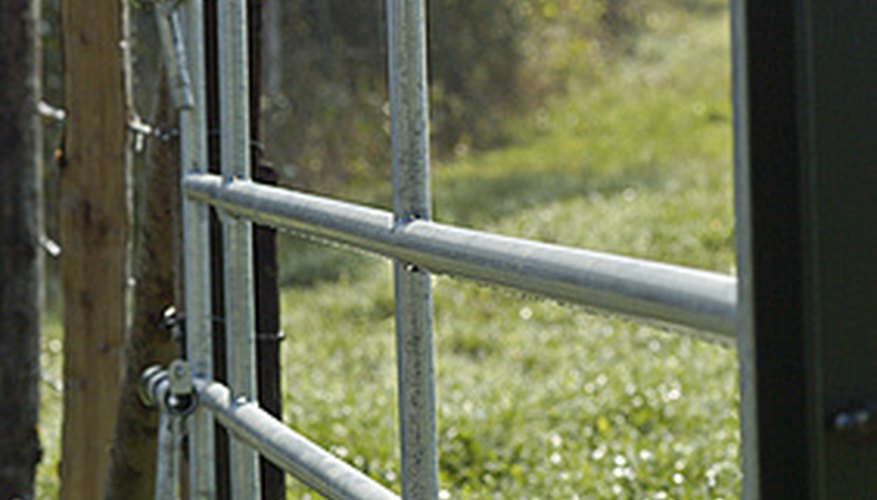Steel gates can protect gardens, livestock, drives or anything else behind them for years if they are properly erected. You can calculate the height and diameter of the steel posts necessary to maintain a steel gate without sagging or falling with a few common sense guidelines. While everyone wants to avoid overbuilding, a common and costly mistake made by many do-it-yourselfers, a few basic bits of information can help ensure the weight of your steel gate is properly supported.
- Steel gates can protect gardens, livestock, drives or anything else behind them for years if they are properly erected.
- You can calculate the height and diameter of the steel posts necessary to maintain a steel gate without sagging or falling with a few common sense guidelines.
Check the gate and fence heights. The gate height should be the fence height minus approximately 4.3 cm (1 3/4 inches) for clearance. The clearance is on the bottom of the gate, so that the gate swings freely. This way, the top line of the fence and the gate is continuous and pleasing to the eye.
Determine the diameter of the gate posts. Measure the diameter of the line posts. Line posts are the posts that support the steel fence. As long as the height of the fence and the gate align, the diameter of the line posts may be used for the diameter of the gate. The exception is when the gate is considerably heavier than the fence panels or the weight of the same width of chain link. Examples of a considerable difference would be a panel used as a gate within an otherwise chain-link fence. If this is the case, you will want a gate post diameter that is 5 cm (2 inches) larger than the line post diameter.
- Determine the diameter of the gate posts.
- As long as the height of the fence and the gate align, the diameter of the line posts may be used for the diameter of the gate.
Determine the length of the gate posts. Measure the gate width. For every 6 m (20 feet) of gate width, add 30 cm (1 foot) to the length of the line posts to determine the length of the gate posts. This excess length will be buried in concrete underground.
